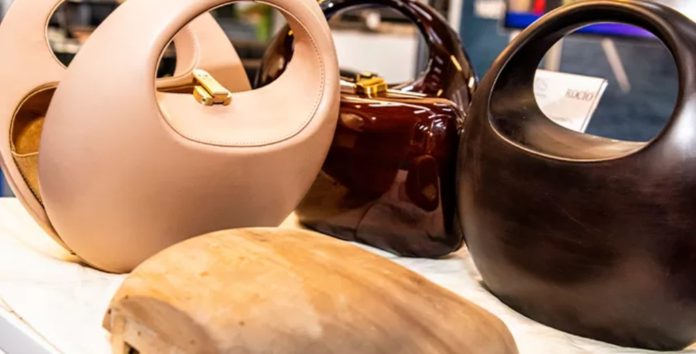The ultimate goal of ROCIO was to develop the inner structure of the bag that could be used as the basis for luxury fabric coverings.
It’s been a few years now that Paris Fashion Week has been highlighting some of the original creations made by talented designers and which have at the heart of their creation process 3D printing.
For some of the attendees, the use of 3D printing may probably not be that important but for fashion professionals, it’s a new era in the creation process; an era that opens new doors for sustainable catwalk-worthy fashion accessories.
Dutch fashion designer Iris van Herpen has become an expert in using 3D printing for fashion and today the luxury eco-fashion brand ROCIO follows the move with a reinvented handbag. The decorative handbags of the Scottish brand are traditionally individually sculpted from harvested acacia wood over a meticulous 19 stage process.
With the goal of exploring a new, sustainable way of manufacturing – AM in this specific case, the fashion company collaborated with the Renfrewshire based research centre, operated by the University of Strathclyde.
Incorporating novel technologies into the manufacturing process opens doors to scale up operations to meet customer demand while simultaneously revolutionising the design process, allowing ROCIO to explore different materials and design constructs. The ultimate goal of ROCIO was to develop the inner structure of the bag that could be used as the basis for luxury fabric coverings.
Atelier, a fashion business school in Spain, then used this prototype to create a final fully structured leather handbag – a first for ROCIO compared to its wooden product.
The structure created captured the same structured art form of ROCIO wooden bag sculptures, which enabled the brand to retain its signature characteristics in aesthetic and silhouette.
Hamish Menzies, ROCIO Creative Director, said: “We are really taken aback by the results. We’re at the heart of sustainable fashion and take pride in each accessory being a uniquely creative masterpiece. The pieces produced are works of art and this unique leather handbag concept delivers outstanding beauty in a structured art form which I believe pushes the boundaries of design. For us, exploring the use of a 3D printed prototype is more cost, time and material efficient in the long term. Through using this technology, we are one step closer to improving our endeavours to be even more sustainable, whilst unlocking and embracing the future capabilities of our industry.”
Remember, you can post job opportunities in the AM Industry on 3D ADEPT Media free of charge or look for a job via our job board. Make sure to follow us on our social networks and subscribe to our weekly newsletter : Facebook, Twitter, LinkedIn & Instagram ! If you want to be featured in the next issue of our digital magazine or if you hear a story that needs to be heard, make sure you send it to contact@3dadept.com






